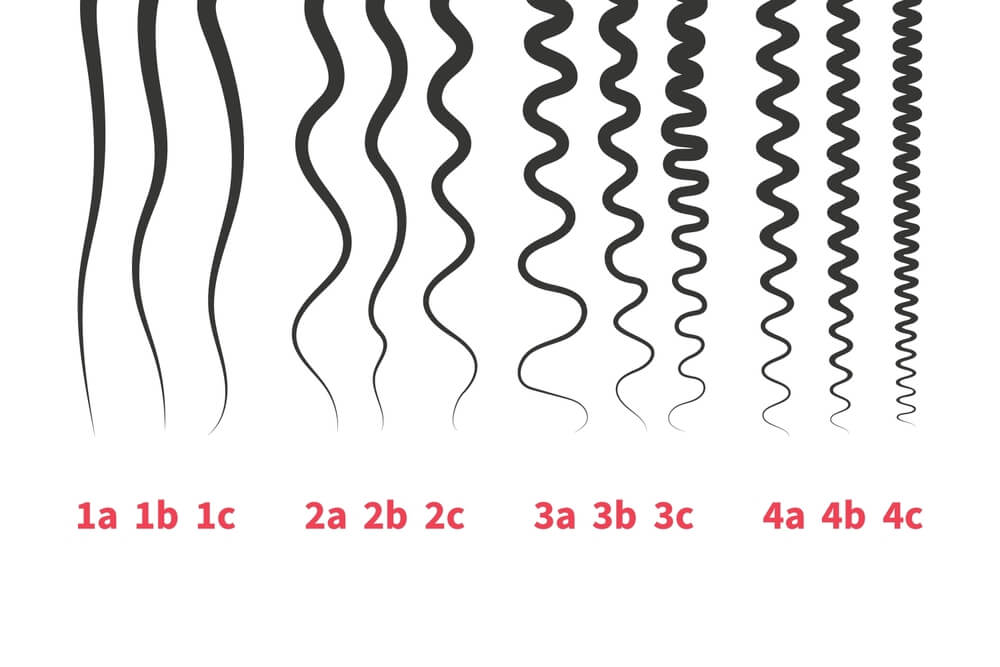
4C hair, with its tight zigzag pattern, is unique and beautiful. It is dense but lacks a defined curl pattern and can be prone to dryness and fragility due to the difficulty of natural oils traveling down its coils. This text addresses challenges like tangling and breakage, offering practical solutions with moisturizing products and a care routine. Understanding these tips helps you embrace your 4C curls while keeping them healthy and vibrant.
Defining 4C Hair Type

Understanding natural hair types is crucial for proper hair care and styling, especially when it comes to curly hair. One of the most unique and intricate classifications within the curly hair spectrum is 4C hair. But what is 4C hair exactly?
The 4C hair type falls under the broader category of Type 4, which encompasses coily or kinky textures. Specifically, 4C hair is characterized by its tight curls that form a zigzag pattern. Unlike other curly types, 4C strands are densely packed and have a high shrinkage rate, often appearing much shorter than their actual length when dry.
Natural hair enthusiasts often refer to the Andre Walker Hair Typing System to classify their curls, where Type 1 represents straight hair and Type 4 includes various forms of coily textures. Within this system, the sub-category “C” signifies the tightest curl pattern in Type 4.
Properly identifying your natural hair type can significantly influence your approach to maintenance and styling. For those with 4C hair, understanding its specific needs, such as increased moisture retention and gentle handling, can lead to healthier, more manageable tresses.
Recognizing what constitutes a 4C hair type allows individuals to tailor their care routines effectively, ensuring that their natural curls remain vibrant and well-nourished.
The Unique Characteristics of 4C Hair
4C hair is renowned for its unique and distinctive characteristics, making it one of the most fascinating hair types to explore. One of the primary features of 4C hair is its texture, which consists of tight coils that form a dense and voluminous appearance. The curl pattern in 4C hair is typically zigzag-shaped, contributing to its tightly coiled nature.
Another notable characteristic is the significant shrinkage of 4C hair. This type can shrink up to 75% of its actual length when dry, which often surprises those unfamiliar with its properties. Despite this shrinkage, 4C hair boasts incredible versatility and can be styled in numerous ways, from afros to twist-outs and braids.
Understanding these features—tight coils, distinct curl pattern, and considerable shrinkage—can help individuals with 4C hair embrace their natural texture and find suitable care routines that enhance their hair’s beauty and health.
Common Challenges Faced by Individuals with 4C Hair
Individuals with 4C hair often encounter unique challenges that require specific care and attention. One of the most common issues is managing dryness in natural hair. Due to the tightly coiled structure of 4C hair, natural oils from the scalp struggle to travel down the hair shaft, leading to increased dryness. This lack of moisture can make the hair more susceptible to breakage in curly hair types.
Another prevalent challenge is tangling issues in coily hair. The intricate curls and coils can easily intertwine, making detangling a time-consuming and sometimes painful process. Regular detangling sessions with a wide-tooth comb or fingers, combined with ample conditioning, are essential to minimize this problem.
Breakage is also a significant concern for those with 4C hair. The fragile nature of each strand means that even minor manipulation can lead to breakage if proper care techniques are not employed. Protective styles and gentle handling are crucial strategies for maintaining length and health.
Understanding these common challenges faced by individuals with 4C hair allows for better management practices tailored specifically for this unique texture. By addressing dryness, minimizing tangles, and preventing breakage through appropriate care routines, individuals can maintain healthy and beautiful 4C hair.
The Best Moisturizing and Conditioning Products for 4C Hair
When it comes to caring for 4C hair, finding the right moisturizing and conditioning products is crucial. 4C hair, known for its tight curls and coils, requires a high level of moisture to maintain its health and manageability. Here are some of the best moisturizers for natural hair and conditioners specifically designed for curly hair types.
1. Shea Moisture Raw Shea Butter Moisture Retention Shampoo: This product is a must-have for anyone with 4C hair. It’s formulated with shea butter, sea kelp, and argan oil to deeply moisturize and condition your curls.
2. As I Am DoubleButter Cream: Known as one of the best products for 4C hair care, this rich cream provides intense hydration thanks to its blend of natural butters and oils like cocoa butter, shea butter, castor oil, jojoba oil, and sugar beet root.
3. Aunt Jackie’s Quench! Moisture Intensive Leave-In Conditioner: This leave-in conditioner is perfect for daily use. It helps detangle knots while delivering much-needed moisture with ingredients like marshmallow root extract and shea butter.
4. Camille Rose Naturals Curl Love Moisture Milk: Ideal as both a moisturizer and a leave-in conditioner, this product contains rice milk and macadamia seed oil to nourish your curls without weighing them down.
5. Mielle Organics Babassu Oil & Mint Deep Conditioner: For deep conditioning treatments that penetrate the scalp and strands effectively, this product uses babassu oil along with amino acids from wheat protein to strengthen while adding moisture.
Incorporating these top-tier moisturizers for natural hair into your routine can make all the difference in maintaining healthy 4C curls. Remember that consistency is key; regular use will ensure that your hair remains hydrated, soft, and manageable throughout any season.
A Step-by-Step Guide to a Healthy Hair Care Routine for 4C Hair
Maintaining the health and vibrancy of 4C hair requires a dedicated and well-rounded hair care routine. Here’s a step-by-step guide to help you embrace your natural curls while keeping them strong and beautiful.
1. Wash Day Routine for Natural Curls
The foundation of any effective hair care regimen is a solid wash day routine. For 4C hair, it’s essential to use sulfate-free shampoos that cleanse without stripping away natural oils. Start by detangling your hair with your fingers or a wide-tooth comb while applying conditioner to minimize breakage. Follow up with a gentle shampoo, focusing on the scalp to remove buildup. Rinse thoroughly and apply a moisturizing conditioner, letting it sit for at least five minutes before rinsing out.
2. Deep Conditioning Methods for 4C Curls
Deep conditioning is crucial for maintaining moisture in coily textures. Opt for deep conditioners rich in natural oils like coconut oil, shea butter, or avocado oil. After washing your hair, apply the deep conditioner generously from roots to tips. Cover your head with a plastic cap and sit under a hooded dryer or use a warm towel to enhance penetration of the product into the hair shaft. Leave it on for about 30 minutes before rinsing thoroughly.
3. Protective Styles for Coily Textures
Protective styles are essential in reducing manipulation and preventing damage to delicate strands of 4C hair. Styles such as braids, twists, bantu knots, or wigs can shield your curls from environmental stressors while promoting growth retention. Ensure that these styles are not too tight to avoid tension on the scalp which can lead to breakage or traction alopecia.
By incorporating these steps into your routine, you’ll be well on your way to achieving healthy, resilient 4C curls.
Tips and Tricks to Promote Growth and Retain Length with 4C Hair
Promoting growth and retaining length with 4C hair requires a dedicated approach tailored to the unique needs of coily textures. Here are some essential tips and tricks to help you on your journey:
Hair Growth Tips for Coily Textures
To encourage healthy hair growth, focus on maintaining a clean scalp. Regular cleansing removes buildup that can hinder growth. Opt for sulfate-free shampoos that won’t strip natural oils, and follow up with a moisturizing conditioner to keep your strands hydrated.
Length Retention Strategies
Length retention is crucial for seeing the fruits of your hair growth efforts. Minimize manipulation by adopting low-manipulation hairstyles that reduce stress on your hair. Additionally, ensure you’re trimming away split ends regularly; this prevents breakage from traveling up the hair shaft.
Protective Styling Tips
Protective styles such as braids, twists, and updos are excellent for safeguarding your hair against daily wear and tear. When installing these styles, avoid excessive tension which can lead to traction alopecia. Also, remember to take breaks between protective styles to give your scalp time to breathe.
Avoiding Breakage in Tight Coils
Breakage is a common challenge with tight coils due to their fragile nature. To combat this, always detangle gently using a wide-tooth comb or your fingers while your hair is damp and coated with conditioner or detangling spray. Incorporate protein treatments into your routine to strengthen the hair shaft and reduce breakage.
Embracing the Beauty and Versatility of Your Natural Curls
Embracing your natural curls is more than just a hair care decision, it’s a celebration of your unique beauty and individuality. The versatility of curly hair allows for endless styling options, from voluminous afros to defined ringlets, making it an exciting journey of self-expression.
Understanding your curl pattern and choosing the right products tailored to its needs are crucial steps in maintaining healthy, vibrant curls. Hydration and moisture are key; incorporating deep conditioning treatments and leave-in conditioners can help combat dryness and frizz, ensuring your curls remain bouncy and defined.
Moreover, adopting gentle hair care practices such as using wide-tooth combs or finger detangling can minimize breakage and maintain the integrity of your curls. Protective styles like braids or twists not only offer variety but also help protect your hair from environmental stressors.

